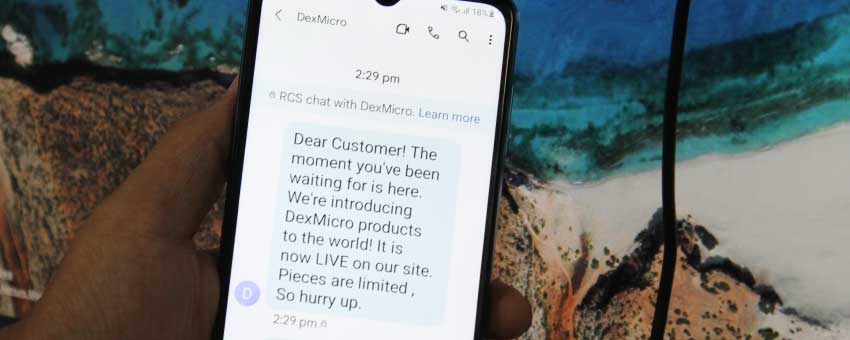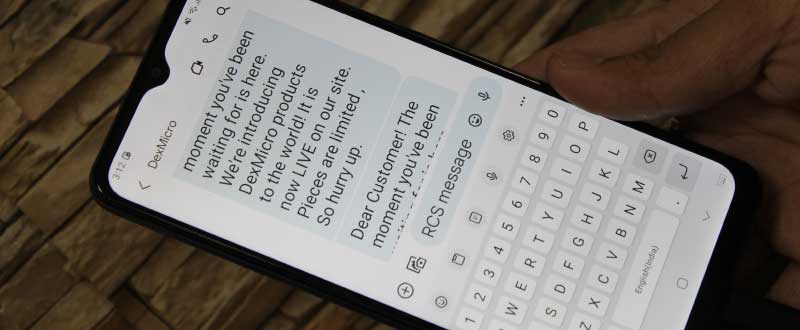Building Contact List and Practices for SMS Marketing
➤Building a contact list for SMS marketing is a crucial step towards launching a successful SMS marketing campaign. Here are some tips on how to build a contact list for SMS marketing:

-
Get Consent:
The first step in building a contact list is to get the consent of your customers. You cannot send marketing messages to people who have not given you permission to do so. You can get consent by asking your customers to opt-in to receive messages from you.
-
Use In-Store Promotions:
If you have a brick-and-mortar store, you can promote your SMS marketing campaign in-store by displaying signage with a call-to-action and short code number. You can also have staff members ask customers if they would like to sign up for your SMS program.
-
Offer Incentives:
Offering incentives such as discounts or exclusive promotions can encourage customers to sign up for your SMS marketing campaign. You can include a call-to-action in your marketing materials or social media posts, encouraging customers to sign up for your SMS program to receive exclusive deals.
-
Use Keyword Campaigns:
You can also build your contact list by using keyword campaigns. This involves using a specific keyword that customers can text to a short code number to opt-in to your SMS marketing campaign. For example, you can ask customers to text a specific keyword such as “JOIN”.
-
Use a Sign-Up Form:
You can create a sign-up form on your website or social media pages where customers can provide their phone numbers and consent to receive SMS messages from you. Be sure to include a clear message explaining the benefits of signing up and the types of messages they can expect to receive.
-
Import Existing contacts:
If you have an existing customer database, you can import your contacts into your SMS marketing platform. Be sure to get consent from your customers before adding their phone numbers to your list.
-
Use Social Media:
You can promote your SMS marketing campaign on social media by posting about it and including a call-to-action encouraging followers to sign up. You can also use social media ads to target new customers and encourage them to sign up.
-
Leverage Events:
If you attend or host events, you can use these opportunities to promote your SMS marketing campaign. Be sure to have a sign-up form or use a keyword campaign to collect phone numbers and consent from attendees.
In summary, building a contact list for SMS marketing involves getting consent, using sign-up forms, offering incentives, using keyword campaigns, importing existing contacts, using social media, in-store promotions, and leveraging events. By following these tips, you can build a targeted and engaged contact list for your SMS marketing campaign.
Send Multimedia Messages (MMS) as Part of SMS Marketing
It is possible to send multimedia messages (MMS) as part of SMS marketing. MMS messages allow businesses to add visual elements such as images, videos, and GIFs to their messages, making them more engaging and impactful. MMS messages have a higher character limit than standard SMS messages, which allows businesses to include more content in their messages.
However, it is important to note that MMS messages can be more expensive than standard SMS messages, and not all mobile devices are capable of receiving MMS messages. It is also important to ensure that the file size of the multimedia content is not too large, as this can lead to delivery issues or increased costs.
However, it is important to note that MMS messages can be more expensive than standard SMS messages, and not all mobile devices are capable of receiving MMS messages. It is also important to ensure that the file size of the multimedia content is not too large, as this can lead to delivery issues or increased costs.
-
Keep the Message Concise:
While MMS messages have a higher character limit than standard SMS messages, it is still important to keep the message concise and to the point. The message should be easy to understand and should clearly communicate the intended message.
-
Test the Message Before Sending:
Before sending an MMS message to a large group of recipients or customers, it is important to test the message to ensure that it appears correctly on different devices and networks. This can help to avoid delivery issues or other problems.
-
Use High-quality Images:
The images used in MMS messages should be high-quality and relevant to the message being conveyed. Avoid using low-resolution images that appear pixelated or unclear.
-
Personalize The Message:
Personalization is key in any marketing campaign, including SMS marketing. Use the recipient's name or other relevant information to make the message feel more personal and engaging.
-
Use Videos and GIFs Strategically:
Videos and GIFs can be effective in capturing the attention of the recipient, but they should be used strategically and only when relevant to the message being conveyed. It is also important to ensure that the file size of the video or GIF is not too large, as this can cause delivery issues.
Overall, MMS messages can be a valuable addition to any SMS marketing campaign, but it is important to use them strategically and to follow best practices to ensure their effectiveness.
